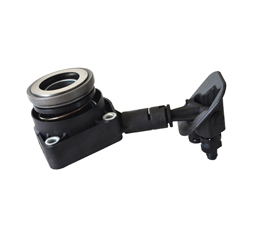The dual-clutch transmission omits the clutch pedal of a traditional manual transmission, and instead uses an electronically controlled hydraulic system to control the two clutches. The input shaft of the dual clutch auto transmission is also divided into two parts. The two clutches are each connected to an input shaft. The hollow outer shaft is used to connect the even-numbered gears in the transmission, and the solid inner shaft embedded in the outer shaft is used for Connect odd gears. The two clutches cooperate with each other during operation, and each is responsible for the power transmission of an input shaft.
When the car is running normally, a clutch is connected to a certain gear in the transmission to transmit the power of the engine to the driving wheels. At the same time, the control unit pre-judges the driver's shifting intention according to the speed of the vehicle and the speed of the engine. Controlling another clutch connected to the gear set for the next gear in the transmission, the clutch is still disengaged and no power transfer has yet taken place.
When shifting, the first clutch is disconnected while the second clutch engages the next gear set in the previously pre-connected transmission with the engine for power transfer to the next gear without interruption of power condition. Except in neutral, one clutch in a dual clutch transmission is always engaged and the other clutch is always disengaged.
It is the structure of the two clutches that cooperates with the shifting gears. The gears are already connected when the gears are switched. The dual clutch auto transmission achieves smooth shifting, quick shifting, and "uninterrupted" power output, which is designed to save fuel. According to Volkswagen's official data, the shift time of the current popular dual-clutch transmission is only about 0.2 seconds. Even the best racers in the world can't change gears as fast as a dual-clutch transmission. The dual-clutch transmission shift time is also far beyond the limits of human operation.
The dual clutch auto transmission is a derivative technology born out of the semi-automatic transmission technology. At present, the dual-clutch automatic transmission, which Volkswagen has successfully used in golf cars, its technical core is developed from the manual transmission of mechanical transmission, but the internal structure is different from that of the manual transmission. A traditional manual transmission is similar. Therefore, it inherits the technical advantages of reliable operation and easy maintenance of manual transmission. At the same time, the dual-clutch transmission is not much different from the ordinary automatic transmission in terms of use, which is convenient and labor-saving.





